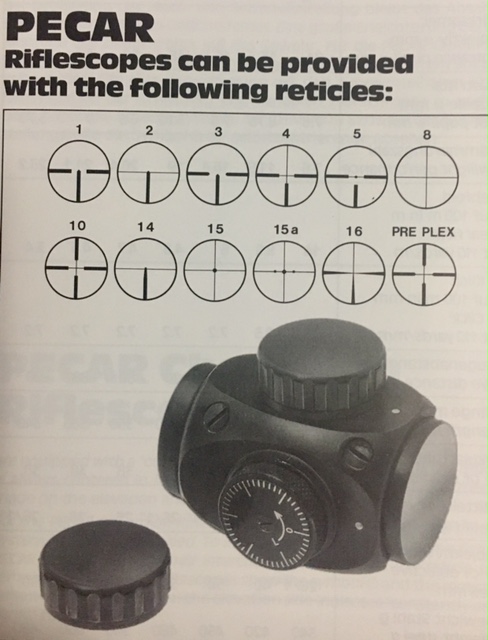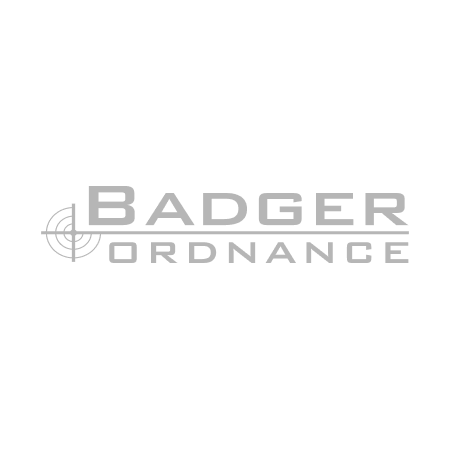The ZF69 (introduced in 1969 on the Steyr SSG69) transformed the all round performance of my M40 at the time. Why this scope was not considered for the M40 in the US in the 1970'ies is beyond me except for the "not invented here" syndrome.
I like the 6x ZF69 scopes, and wish I could find a nice 10x version of the ZF84, as I'd like to put it on an SSG-69, but I think the history of the M40A1 scope is a bit more complex. It wasn't so much as a 'not invented here' issue as it was this question - '
What manufacturer will help us make a truly unique USMC sniper scope with a crazy new reticle pattern ?' (....
And we probably only need 600 or so of these scopes too). Not even Leupold at the time would make the USMC's requested modifications, even though their M8 scope (10X) was apparently found otherwise favorable.
The fact is that the USMC evaluated a several scopes in the 1977-1978 period when they updated the M40 to M40A1 specification. (Leupold M8, updated Redfield Widefield 3-9x, Weaver T10, an innovative RAND Systems Corporation 'dual-power' 3x & 9x scope, etc).
The issue was that the well-respected Officer in Charge (OIC) of the USMC Sniper School, Jack C. Cuddy, wanted to incorporate a very innovative reticle that was developed at the MTU (Marksman Training Unit), which was based on the milirad system for range estimations, without any moving parts, etc -
and no commercial scope manufactures wanted to invest the time and effort to make a custom reticle for a small volume of USMC-specific sniper scopes...except for one small business based out of Pennsylvania - the John Unertl Optical Company. The owner, John Unertl Jr, spent a lot of time down at the USMC base in Quantico Virginia in the late 1970s, where he and the USMC sniper school developed THE transformative sniper scope reticle - the now famous Mil-Dot system. Attached are 3 excerpts from Peter Senich's excellent book,
The One-Round War (1996), that describes the late 1970s collaboration. The scope's reticle was described in a January 1981 manual:
"Reticle: Mil dot duplex for range estimation and calculating leads on moving targets"
Perhaps if Kahles or Swarowski had been willing to fly some optical engineers over to the USA and work closely with the USMC Sniper Instructors/OIC in the late 1970s, history might have been different - but it John Unertl's gamble to work hand-in-hand to development a completely new and robust scope that was both 'Marine proof' and had a Mil-Dot reticle that changed history. Basically all 'modern' military sniper scopes since the 1980s equipped with Mil-Dot reticles, or today's 'Gen II' Mil-Dot reticles, can trace their roots back to the Unertl 10x USMC sniper scope developed in the late 1970s and first tested in 1980.
Again, I like the little ZG69 scope and wish I could find a nice ZF84 (10x version), but it should be noted that the USMC Unertl scopes were so strong, that when the USMC adopted the big 50 caliber Barnett M82 sniper rifles in the early 1990s, the Unertl company didn't need to do anything to the scope's construction other than change the marking on the BDC /elevation dial from 1000 yards (7.62 NATO) to 1800 yards - given the 50 BMG's extended range. They also marked the scopes '50 CAL' on the side (see pic #4), but otherwise they are the same as the M40A1 scopes. Whether or not a Kahles ZF69 scope could withstand the serious recoil forces of a 50 BMG sniper rifle is unknown, but the Unertl's did... Anyhow, my apologizes for the digression re all this history, but it is something I have read a lot about.










